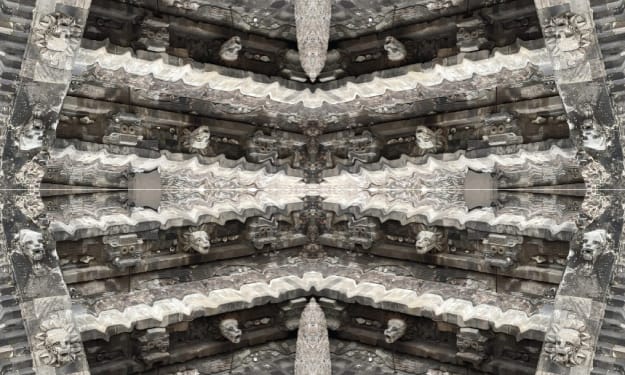The Taj Mahal: An Eternal Love Story in Marble
Taj Mahal

The Taj Mahal: A Timeless Testament of Love and Architectural Mastery
The Taj Mahal, an architectural masterpiece and one of the world's most iconic landmarks, stands as a symbol of eternal love and breathtaking beauty. Located in Agra, India, this magnificent mausoleum has captivated the hearts and minds of people across the globe for centuries. In this article, we explore the history, significance, and enchanting allure of the Taj Mahal.
History and Construction
Commissioned by the Mughal Emperor Shah Jahan in the 17th century, the Taj Mahal was built as a mausoleum for his beloved wife, Mumtaz Mahal. Construction of this architectural marvel began in 1632 and took approximately 22 years to complete, involving the labor of thousands of artisans, craftsmen, and workers. The Taj Mahal's design was the brainchild of renowned architect Ustad Ahmad Lahauri, drawing inspiration from Persian, Islamic, and Indian architectural styles.
Architectural Marvel
The Taj Mahal is a testament to the exquisite craftsmanship and attention to detail. Made entirely of white marble, the mausoleum is a harmonious blend of symmetry, proportion, and intricate ornamentation. Its central dome, reaching a height of 240 feet (73 meters), is flanked by four smaller domed chambers, each adorned with delicate minarets. The structure is adorned with inlaid semi-precious stones, intricate calligraphy, and floral motifs that create a mesmerizing visual spectacle.
Symbol of Love and Romance
The Taj Mahal stands as a monument to love, immortalizing the profound bond between Emperor Shah Jahan and his wife, Mumtaz Mahal. Mumtaz Mahal was Shah Jahan's favorite wife, and her untimely death while giving birth to their 14th child left the emperor devastated. To honor her memory, Shah Jahan envisioned a mausoleum that would be an unparalleled testament to their love. The Taj Mahal's beauty and elegance reflect the emperor's deep affection and longing for his beloved wife.
Architectural Significance
The Taj Mahal's architectural brilliance lies in its perfect symmetry and meticulous design. The entire complex is meticulously planned, with the mausoleum positioned at the end of a long reflecting pool, creating a captivating reflection that seems to double its magnificence. The surrounding gardens, known as the Charbagh, are laid out in a quadrilateral shape, divided into four equal parts by pathways and water channels. The meticulous arrangement of gardens and water channels represents the Islamic concept of paradise and adds to the ethereal ambiance of the site.
Cultural and Historical Importance
Beyond its architectural splendor, the Taj Mahal holds immense cultural and historical significance. Recognized as a UNESCO World Heritage Site, it is considered a masterpiece of Muslim art and a testament to the rich cultural heritage of the Mughal Empire. The Taj Mahal attracts millions of visitors from around the world who come to admire its majestic beauty, experience its tranquil surroundings, and pay homage to the enduring power of love.
Preservation and Conservation Efforts
Preserving the Taj Mahal's pristine beauty is a top priority. Over the years, pollution and environmental factors have posed significant challenges to its conservation. Efforts have been made to protect the monument, including measures to control air pollution, restrict industrial activities in the vicinity, and limit the number of visitors. The use of eco-friendly cleaning methods and ongoing restoration work ensures that future generations can continue to marvel at the Taj Mahal's splendor.
Conclusion
The Taj Mahal stands as a testament to human creativity, craftsmanship, and the power of love. Its ethereal beauty, symmetrical design, and intricate detailing continue to mesmerize and inspire visitors from all walks of life. As a UNESCO World Heritage Site and one of the New Seven Wonders of the World, the Taj Mahal represents the pinnacle of architectural excellence and is an everlasting symbol of enduring love and romance. A visit to the Taj Mahal is a journey into a realm of awe and wonder, where the past converges with the present, and the sheer magnificence of human achievement is revealed.
About the Creator
Ajith Kumar
Good story teller about Sci-Fi, Adventure, thriller
Good in Pet Fishes and Pet Birds detailes
Good in General Facts
Enjoyed the story? Support the Creator.
Subscribe for free to receive all their stories in your feed. You could also pledge your support or give them a one-off tip, letting them know you appreciate their work.






Comments
There are no comments for this story
Be the first to respond and start the conversation.